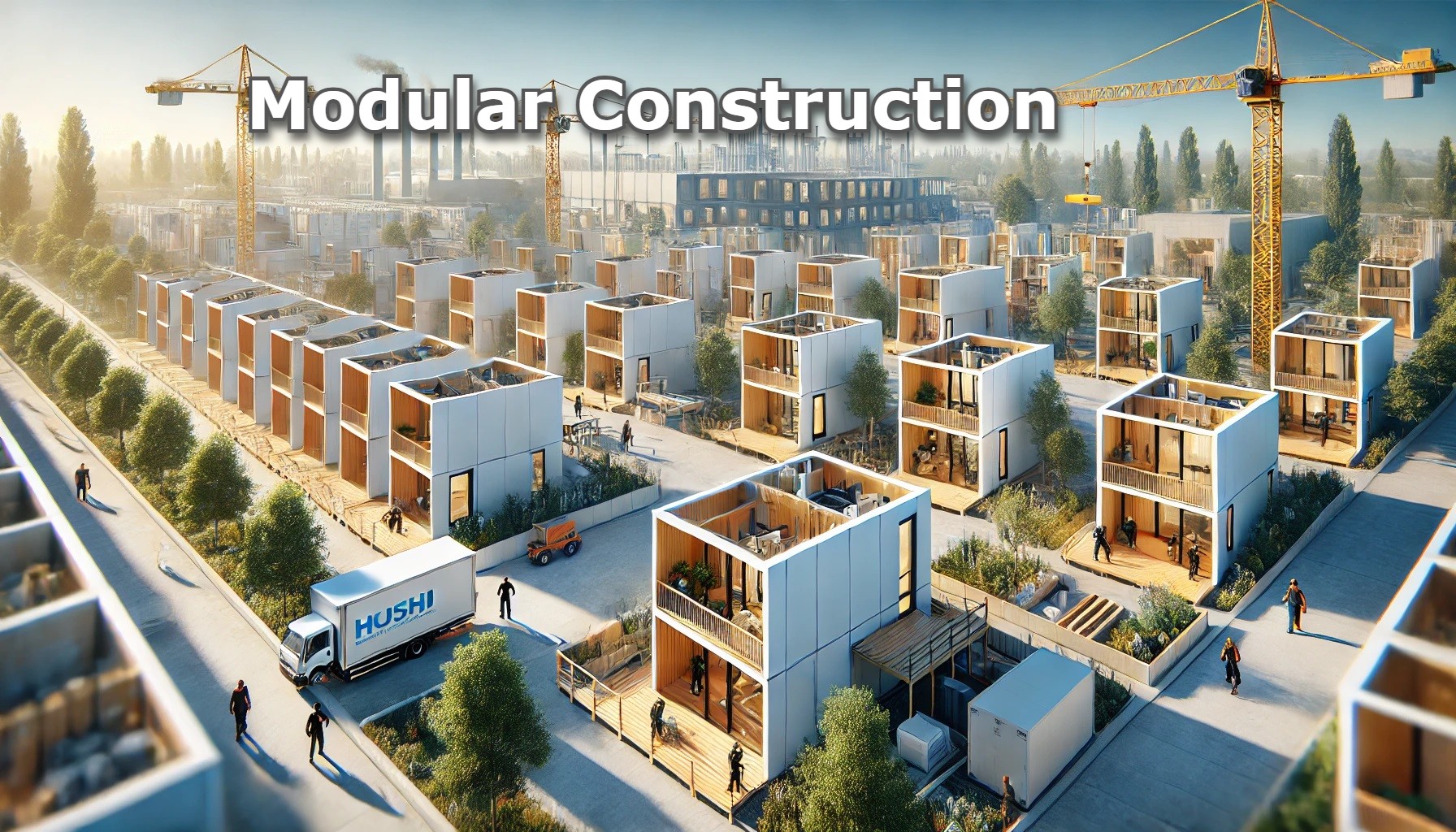The construction industry is undergoing a fundamental change through the adoption of modular construction techniques which produce building components in different facilities before final installation at the site. This construction approach allows building development to happen faster and enables both cost reductions and sustainability improvements. The application of modular construction brings related obstacles like project delivery complexity together with design constraints. The paper examines how modular construction functions alongside its technical limitations while investigating prospects in building.
Advantages of Modular Construction
Speed of Construction
The main advantage of modular construction manifests itself as shorter build durations. A controlled factory environment used for module manufacturing alongside concurrent site preparation enables projects to finish construction much faster than traditional methods. A Brisbane development crew built a seven-story apartment complex within eleven days through their use of modular building approaches which dramatically reduced the construction timeline.
NEWS
Cost Efficiency
A rapid construction timetable directly minimizes project expenses. Building times reduced by using modular construction techniques help decrease labor expenses and decrease site management and equipment rental costs. The factory environment enables bulk ordering as well as waste reduction which together lower project expenses. According to McKinsey & Company’s analysis modular construction will contribute $22 billion annually in cost savings to U.S. and European construction industries by 2030.
Enhanced Quality Control
Quality control remains consistent because building modules take place inside controlled factory conditions. The use of controlled settings enables precise measurements and tight standard implementation which leads to better finish quality with fewer defects. Achieving the same quality standards proves harder to reach through traditional site-based construction because site variables interfere with craftsmanship performance.
Environmental Sustainability
The sustainable nature of manufacturing process occurs because factories maximize material efficiency while decreasing project waste. The manufacturing process in factories allows optimized material cuts and leftover material reuses that result in full-scale reductions to site waste compared to conventional construction sites. The compressed construction period brings two positive results: decreased operations carbon use and optimized environmental footprint of building locales. Studies show that high-rise building construction in Wolverhampton used modular methods which resulted in 5% waste weight compared to typical traditional construction methods that average 10-13% waste weight.
Challenges of Modular Construction
Logistical Complexities
The process of moving big factory-produced elements to building sites demands exact pre-planning. The building process encounters three key challenges since it must face transportation rules while coordinating delivery scheduling against assembly orders and delivery must not result in module damage. When applied impracticalities create unwanted challenges that potentially diminish project benefits.
Design Limitations
The design restrictions imposed by modular construction methods decrease overall building flexibility despite providing project efficiencies. Module transportation requirements limit buildings’ dimensions and total weight which often constrain architectural design freedom. The field of modular design advances daily to unlock new opportunities that produce unique architectural solutions.
High Initial Investment
Creating modular construction facilities demands substantial investments before implementation starts. Initiating modular construction requires allocating substantial resources toward machinery systems as well as building factories and training specialized workforce. The combination of design work and planning steps requires thorough collaboration between architects engineers and manufacturing professionals. Developers face substantial obstacles during their initial capital spending for modular construction projects.
Regulatory and Acceptance Barriers
Local authorities often struggle with approving modular construction since building codes show inconsistent standards across different geographic regions. Some stakeholders endorse a negative view of modular buildings because they believe these structures are of inferior quality compared to traditional buildings. For modular methods to become widely accepted both regulatory and societal obstacles must be adequately resolved.
The Future of Modular Construction
Modular construction shows promising growth potential despite its present obstacles. The expanding need for budget-friendly housing as well as the shortage of experienced constructors in the industry creates major incentives towards using modular building techniques. In Australia, organizations choose modular homes to solve the housing shortage because they reduce construction duration and spending costs.
The industry experiences forward progress through advanced technology developments. Building Information Modeling (BIM) among other digital tools enables more accurate design work and builds with precise engineering. The modular construction movement now shows an increased preference for environmentally friendly practices because these buildings include energy-saving systems alongside sustainable materials.
Modular construction techniques offer building professionals an outstanding solution that combines speedy construction with cost-efficiency and environmentally friendly practices. Modula construction techniques are expected to gain increased industrial acceptance because of ongoing technological innovations despite present implementation obstacles.

